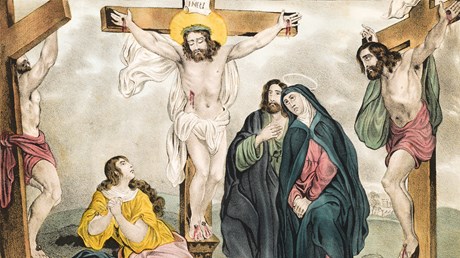A closer look at the climactic moment on the cross.

One of the most famous lines in Scripture is also one of the most puzzling. We all know that Jesus, as he was dying, uttered the triumphant words “It is finished” (John 19:30). We quote it all the time. We celebrate it in our songs and our sermons. Some of us have the original Greek word, tetelestai, tattooed on our bodies. Yet if someone asked us to say exactly what it means—to define the “it” that is “finished”—we might have to stop and think for a while. Is Jesus saying that his life and mission are over? That the power of sin is broken? That the reign of death is ended? All of the above?
Theologically speaking, we could defend each interpretation. But it is interesting that John, the only evangelist who records the phrase, does not mention any of them. Instead, he connects it to several other themes by using a flurry of similar terms in one paragraph. In just three verses, he uses a word for fulfill or fill five times, with Jesus’ dying cry the climactic example.
If we over-translated it, we would get something like this: “After this, Jesus, knowing that all was now fulfilled, said (to fulfill the Scripture), ‘I thirst.’ A jar full of sour wine stood there, so they put a sponge full of the sour wine on a hyssop branch and held it to his mouth. When Jesus had received the sour wine, he said, ‘It is fulfilled,’ and he bowed his head and gave up his spirit” (19:28–30, ESV throughout, emphasis added). John, it seems, wants us to see Christ’s death not merely as a conclusion, but as a culmination.
Each of these five words is worth reflecting on, as they help us see the connections John is making. The first refers back to the ...
from Christianity Today Magazine
via

.gif)

.gif)

.gif)
.gif)
